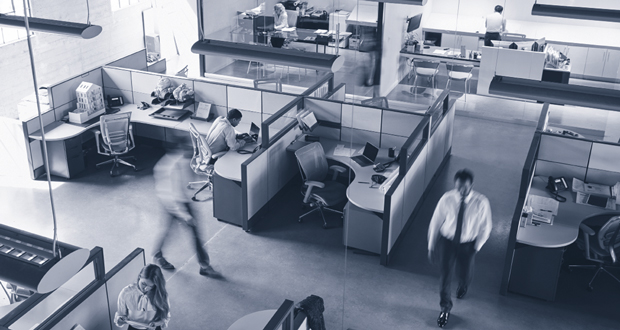We talked to industry experts about what FMs need to do to get buildings ready for the post COVID-19 world
Never before in the FM sector have priorities changed so quickly. In February and March it was all about exiting people from buildings, closing them down and setting up home-working. In April and May it was about managing a largely empty portfolio. And now as we move into June, the industry has gone full circle as businesses slowly start to reopen and facilities managers get their sites ready to be occupied again.
Businesses need to take a three-step approach to re-occupation, says Ravi Bhatnagar, Account Director at boutique facilities management provider Anabas. “The first focus is on preparing the building itself, the second focus should be on preparing and training the facilities team so they’re ready for the new normal to support people when they come back to the building. And the third step is readying the workforce in advance through clear communication about what to expect when they return to work, training them on new policies and protocols for social distancing, clear desk policies and what to do in the event of an emergency.”
The process needs to start by risk assessing the workplace against government guidance standards to determine the capacity for people returning, says Chris Moriarty, Director of insight and Engagement at the Institute of Workplace and Facilities Management. “Social distancing requirements will likely mean that the number who can return to the workplace is dramatically reduced. To determine what the operational workspace actually is, they will also need to review things such as access points and lifts, optimising flows and minimising bottlenecks.”
PRIORITISE SPACE
Once FMs know how many people they can accommodate, they will need to consider who needs to be physically at work and who does not, to help prioritise and organise the space. This may result in a large number of people, possibly a majority, continuing to work remotely who will need to be supported to create workspaces conducive to productive working, adds Moriarty.
In their guide Ready to Reoccupy, Atalian Servest sets out several different options to introduce people back into the workplace including a pilot programme with around 10 per cent of a building’s normal capacity to allow the workplace team to stress-test new systems and processes; staggered starts and finishes; increased shift patterns; different teams/ departments working alternate days; split team working whereby a percentage of a team work in the office on one day, with their counterparts working from home and then they switch; and using local offices or branches to reduce the need to commute. “This phased return is likely to be measured, with organisations using pilots to test the model and then gradually increasing capacity from 10 per cent to 20 per cent and onwards until full occupancy is achieved,” says Rob Legge, Global Group CEO at Atalian Servest.
The physical space will need to change substantially from the environment that employees left behind in March. Angela Love, Director, Active Workplace Solutions is already seeing clients ordering perspex screens for desks, for example. How we use office space is something we really need to think carefully about, adds Rachel Houghton, Managing Director at Business Moves Group. “Will hotdesking become a thing of the past? Will we each have our own desk? If so, how’s that going to impact the desk-to-employee ratios, and what are the cost implications? There are no quick fixes and it’s going to be different for different organisations.”
Although face-to-face meetings will resume, meeting room capacity is likely to be reduced by up to 50 per cent to maintain social distancing in smaller rooms. For a period of time, face-to-face meetings should still be limited, urges Active’s Love. “Despite being in the same building, if a meeting needs to be held then this can still be done virtually. Zoom or Microsoft Teams makes this easily achievable.”
Organisations need to decide how they are going to enforce social distancing measures. Will the facilities team prepare the building and make social distancing possible and then leave people to make their own decisions? Or will they police the policy and if so, how will how they do this?






